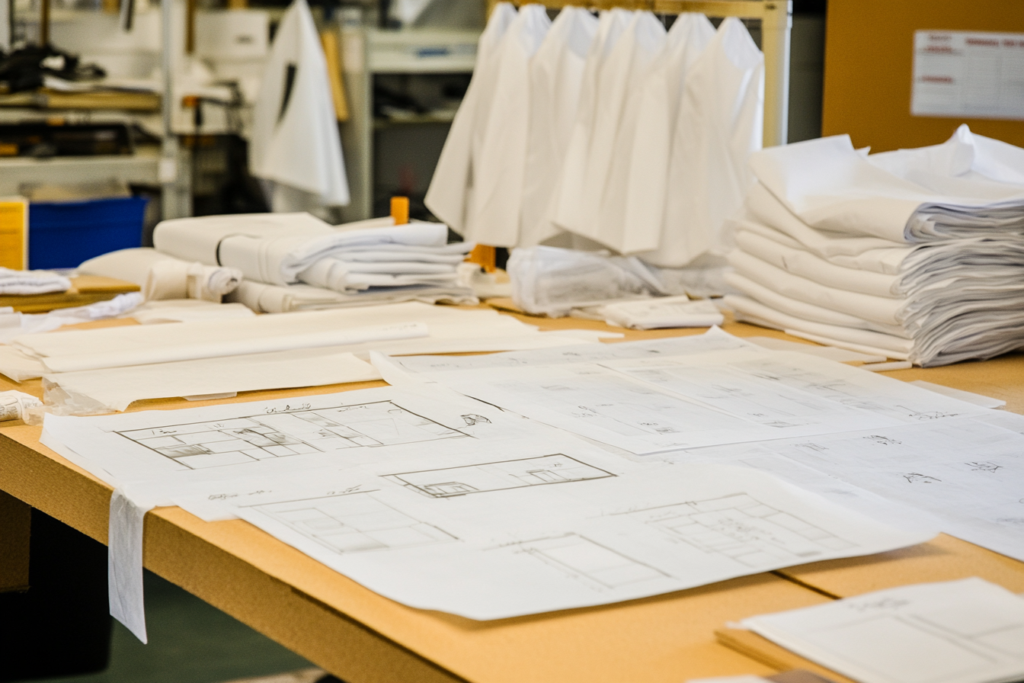Sample Evaluation Comments: A Critical Step in Garment Development
Meta Description: Sample evaluation comments are essential feedback notes added to a specification sheet to ensure that the next garment sample meets design, quality, and fit expectations. Learn why these comments matter and how they guide the production process.
What Are Sample Evaluation Comments?
Sample evaluation comments are feedback and instructions recorded after evaluating a garment sample, typically during the sample fitting process. These comments serve as a guide for designers, manufacturers, and pattern makers to improve the garment based on real-world testing. The comments are documented and added to the specification sheet before producing the next iteration of the sample.
In the fashion and garment production process, sample evaluation is a vital step that helps ensure the final product aligns with the design vision and meets quality standards. Without detailed evaluation, the production process may face costly mistakes or delays.


What to Include in Sample Evaluation Comments?
Sample evaluation comments typically cover a wide range of feedback, instructions, and suggestions that will help guide improvements before the next sample is made. Here are the most common elements to include:
1. Notes on Design and Aesthetics
- Design Adjustments: Comments related to any design changes such as neckline depth, pleat positioning, or embellishment alterations.
- Fabric Choices: Feedback on how the fabric behaves, such as stretch, drape, or texture, and whether it aligns with the intended look.
- Pattern Placement: If patterns or prints do not align correctly, this needs to be noted, such as ensuring stripe matching or print alignment.
- Trim and Details: Comments on the placement and functionality of trims like buttons, zippers, or embroidery, and whether they meet aesthetic or functional requirements.
2. Fit Adjustments
- Fit Issues: Notes on whether the garment is too tight, too loose, or not fitting properly in certain areas (such as the bust, waist, hips, or sleeves).
- Proportions: Adjustments on length, width, and silhouette (e.g., too long sleeves, shortened hem, or revised inseam).
- Ease and Comfort: Whether the garment allows for comfortable movement or if there are areas of tightness or restriction.
- Additional Measurements: Specific measurements that need to be added or refined (such as armhole depth, bust span, or hip line).
3. Construction and Quality Issues
- Stitching: Comments on the stitch type, stitch density, and whether they are meeting standards. If there are areas where stitching is uneven or coming apart, these should be noted.
- Seams and Hems: Feedback on the seam finish and whether the hem lies flat or requires reworking (for example, a raw edge that needs overlocking).
- Fabric Handling: Whether the fabric needs to be pre-washed, pre-shrunk, or if it’s showing any signs of wear or fading.
4. Updates to Specifications
- Revised Tech Packs: Any changes in the materials, sizes, or design features that need to be added to the tech pack or specification sheet for the next sample.
- Revised Measurements: Any changes in measurements such as bust, waist, or inseam, which need to be communicated to pattern makers.
- Corrective Actions: Any necessary actionable steps that need to be taken by the sample makers or production team to address the issues noted in the evaluation.
5. Fit Record and Fit Model Comments
- Fit Model Feedback: If a fit model was used for the evaluation, comments from the model about comfort and ease of movement should be included.
- Fit Adjustments Based on Feedback: If the fit model expressed discomfort, changes in seam placements, cuffs, or neckline shape may need to be adjusted.
6. Sample Revisions and Follow-up
- Revised Instructions: Clear step-by-step revisions that detail how the sample should be adjusted (e.g., slim down waist, add more length to the sleeves).
- Next Steps: Instructions on the next round of changes for the sample or when to produce the final sample once the necessary adjustments are made.
Why Are Sample Evaluation Comments Important?
- Improve Accuracy: Sample evaluation comments ensure that the design, fabric, fit, and construction are exactly what the designer intended, reducing the chance of miscommunication between design and production teams.
- Ensure Fit and Comfort: By documenting fit-related issues and addressing them, comments ensure that the garment will fit comfortably on different body types, meeting market expectations.
- Reduce Production Costs: Early identification of design flaws or manufacturing issues helps save time and money by avoiding unnecessary production reworks or delays.
- Align Production with Design: These comments act as a reference tool that keeps everyone in the production chain aligned with the designer’s vision and ensures that the garment produced is up to quality standards.
Best Practices for Writing Sample Evaluation Comments
- Be Specific: Use clear and detailed language to specify issues and changes. For example, instead of saying “the sleeves are tight,” specify “increase sleeve width by 1 inch from the armhole to the wrist.”
- Use Visual References: Whenever possible, include photographs, sketches, or mark-up drawings to illustrate the feedback. This helps convey ideas more clearly.
- Prioritize Feedback: List feedback in order of importance—first addressing fit issues, then aesthetic and construction concerns.
- Collaborative Tone: Keep comments constructive and professional, promoting a collaborative approach to problem-solving rather than assigning blame.
- Follow Up: After the next sample is produced, ensure that feedback from the first evaluation was addressed and make additional comments if necessary.
Sample Evaluation Comment Example
| Issue | Suggested Action |
|---|---|
| Fit of the Waist | Waist is too tight. Increase by 1.5 inches for a more comfortable fit. |
| Sleeve Length | Sleeves are 2 inches too short. Lengthen by 2 inches and test for comfort. |
| Fabric Drape | Fabric is too stiff. Consider a lighter-weight fabric or add fabric softener treatment. |
| Button Placement | Move buttons on the cuffs 1 inch lower to create a more relaxed fit. |
| Seam Quality | Seams are loose in certain areas. Reinforce seams with additional stitching for durability. |
Conclusion: The Role of Sample Evaluation Comments in Garment Production
Sample evaluation comments are a crucial element in the garment development process. They ensure that every detail of the design—whether it’s the fit, fabric, construction, or aesthetic elements—is carefully evaluated and improved before mass production begins. This process helps to ensure that the final product meets the designer’s vision, adheres to quality standards, and is ready for the market.
By giving clear, actionable feedback on the specification sheet, designers and manufacturers can work together to produce a high-quality, well-fitting garment that meets both production goals and customer expectations.



